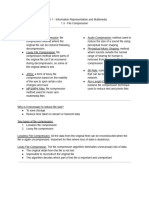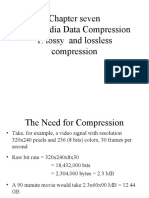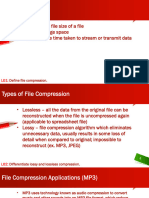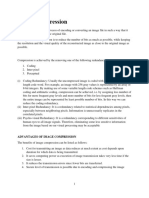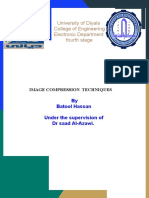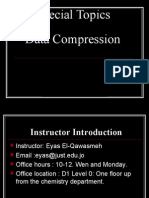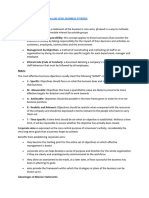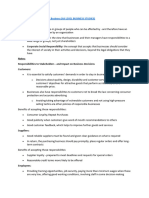0% found this document useful (0 votes)
22 views1 pageCompression
Compression reduces file size without significant loss of quality. There are two main types: lossless compression perfectly reconstructs the original file, using techniques like run-length encoding to reduce repetition. Lossy compression irreversibly removes unnecessary data, lowering quality but further reducing file size, as seen in formats like MP3 and JPEG that discard parts imperceptible to humans.
Uploaded by
Khushi PallooCopyright
© © All Rights Reserved
We take content rights seriously. If you suspect this is your content, claim it here.
Available Formats
Download as DOCX, PDF, TXT or read online on Scribd
0% found this document useful (0 votes)
22 views1 pageCompression
Compression reduces file size without significant loss of quality. There are two main types: lossless compression perfectly reconstructs the original file, using techniques like run-length encoding to reduce repetition. Lossy compression irreversibly removes unnecessary data, lowering quality but further reducing file size, as seen in formats like MP3 and JPEG that discard parts imperceptible to humans.
Uploaded by
Khushi PallooCopyright
© © All Rights Reserved
We take content rights seriously. If you suspect this is your content, claim it here.
Available Formats
Download as DOCX, PDF, TXT or read online on Scribd
/ 1



